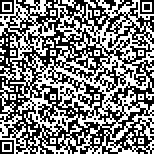| 引用本文: | 吴迪,何嘉武,谭俊,郑晓辉,杜建华.超声辅助喷射电沉积Ni-Gns复合镀层制备工艺[J].哈尔滨工业大学学报,2018,50(5):83.DOI:10.11918/j.issn.0367-6234.201706100 |
| WU Di,HE Jiawu,TAN Jun,ZHENG Xiaohui,DU Jianhua.Preparing technique of Ni-Gns composite coating by ultrasonicassisted jet electrodeposition[J].Journal of Harbin Institute of Technology,2018,50(5):83.DOI:10.11918/j.issn.0367-6234.201706100 |
|
| 本文已被:浏览 1733次 下载 1119次 |

码上扫一扫! |
|
|
| 超声辅助喷射电沉积Ni-Gns复合镀层制备工艺 |
|
吴迪1,2,何嘉武1,2,谭俊1,郑晓辉1,杜建华1,2
|
|
(1.陆军装甲兵学院 装备维修与再制造工程系,北京 100072; 2.陆军装甲兵学院 科研学术处,北京 100072)
|
|
| 摘要: |
| 针对传统的石墨负极存在着比容量低、充电时体积膨胀大导致电极结构不稳定、倍率性能差等缺点,提出采用镍-石墨烯纳米薄片(Ni-Gns)复合镀层作为锂离子电池负极材料的解决方案.为验证该材料的性能,创新研制超声辅助喷射电沉积实验装置,在不同的工艺条件下制得Ni-Gns复合镀层,并制成电池负极.采用正交实验法,以电极充放电循环50次后的放电容量为评价指标,测定最优的电沉积工艺参数组合.结果表明,电沉积参数显著性顺序为:Gns的掺量m >镀层厚度h >电流密度D >镀液温度T,最优数值组合为:m = 0.75 g·L-1,h = 30 μm,D = 33 A·dm-2,T = 35 ℃.观察在此条件下制得的镀层的表面形貌和微观结构,发现Ni-Gns复合镀层结构致密,界面结合良好,Gns在其中弥散分布;给出碳族纳米纤维(晶须)作为增强相的过渡族金属-碳族复合材料电沉积过程机理模型.研究认为:超声波起到提升电沉积效率、改善镀层组织结构的作用;在功率超声和电沉积的协同作用下,Ni(基体相)和Gns(增强相)之间形成由“镍桥”搭接构成的密集且分布均匀的“逾渗导电网络”,结合Gns的多层细密蜂窝状薄片结构和自身优异的力学、电化学性能,因此该材料的导电性能优异、结构稳定,适合用作锂离子电池负极材料.
|
| 关键词: 超声辅助喷射电沉积 Ni-Gns锂离子电池负极材料 正交试验 镍桥 逾渗导电网络 辐射状锂离子迁移模型 |
| DOI:10.11918/j.issn.0367-6234.201706100 |
| 分类号:TQ153.4+3;TM911 |
| 文献标识码:A |
| 基金项目:装备预研基金项目(9140C850202100C85) |
|
| Preparing technique of Ni-Gns composite coating by ultrasonicassisted jet electrodeposition |
|
WU Di1,2,HE Jiawu1,2,TAN Jun1,ZHENG Xiaohui1,DU Jianhua1,2
|
|
(1. Department of Equipment Maintenance and Remanufacturing Engineering, Army Armored Force Academy, Beijing 100072, China; 2. Department of Scientific Research, Army Armored Force Academy, Beijing 100072, China)
|
| Abstract: |
| Aiming at the shortcomings of traditional graphite negative electrode, such as low specific capacity, large volume expansion of charging, resulting in instability of electrode structure and poor rate performance, it is proposed to use nickel graphene nanosheet (Ni-Gns) composite coating as a cathode electrode material for lithium-ion battery. To verify the performance of this material, a new ultrasonic assisted jet electrodeposition experiment device is developed, and the Ni-Gns composite coating is prepared under different process conditions. Then, the battery negative electrode is fabricated based on such composite materials.. An orthogonal experimental method is employed to measure the discharge capacity of the electrode over 50 charge/discharge cycles, and the electrodeposition process parameters are optimized. The results show that the dominant electrodeposition parameters sequences: added amount of Gns m > coating thickness h > current density D>bath temperature T; optimized process parameters: m = 0.75 g·L-1, h = 30 μm, D = 33 A·dm-2, T= 35 ℃. The surface morphology and microstructure of the optimized coating are observed, which show the Ni -Gns composite coating has a compact structure and a good interface bonding. For transition metal-carbon composite materials, the mechanism model for the electrodeposition process of carbon nanofibers (whiskers) as reinforcement in this composite is proposed. The study suggests that the ultrasonic wave can improve the efficiency of electrodeposition and the structure of the coating. Under the synergistic action of power ultrasonic and electrodeposition, Ni (matrix) and Gns (reinforcing phase) connected by "nickel bridge" between the overlapping form dense and uniform distribution of "percolation conductive network". Combined with Gns's multilayer thin honeycomb lamella structure and its excellent mechanical and electrochemical properties, the material has excellent conductivity and stable structure, and is suitable for lithium ion battery cathode material.
|
| Key words: Ultrasonic assisted jet electrodeposition Ni-Gns lithium ion cathode material orthogonal experiment nickel bridge percolation conductive network radiative transfer model of lithium ion |







